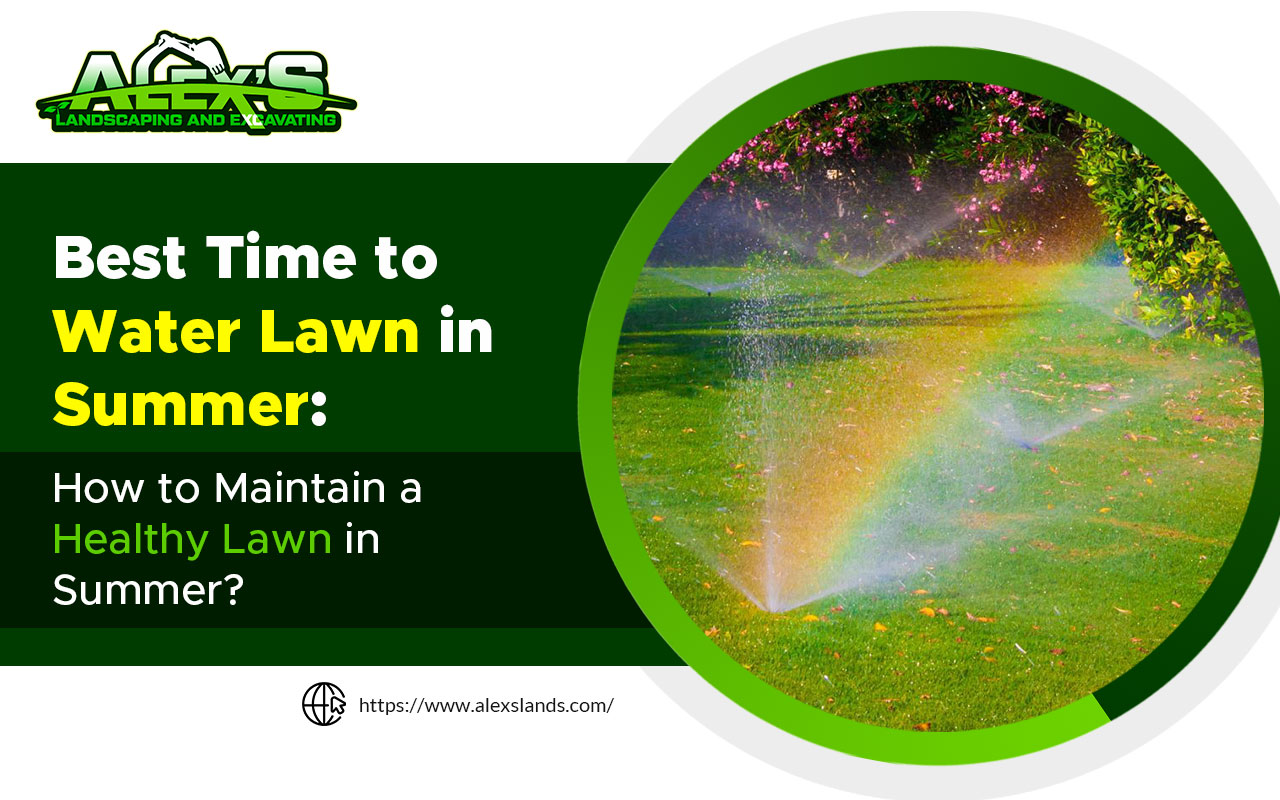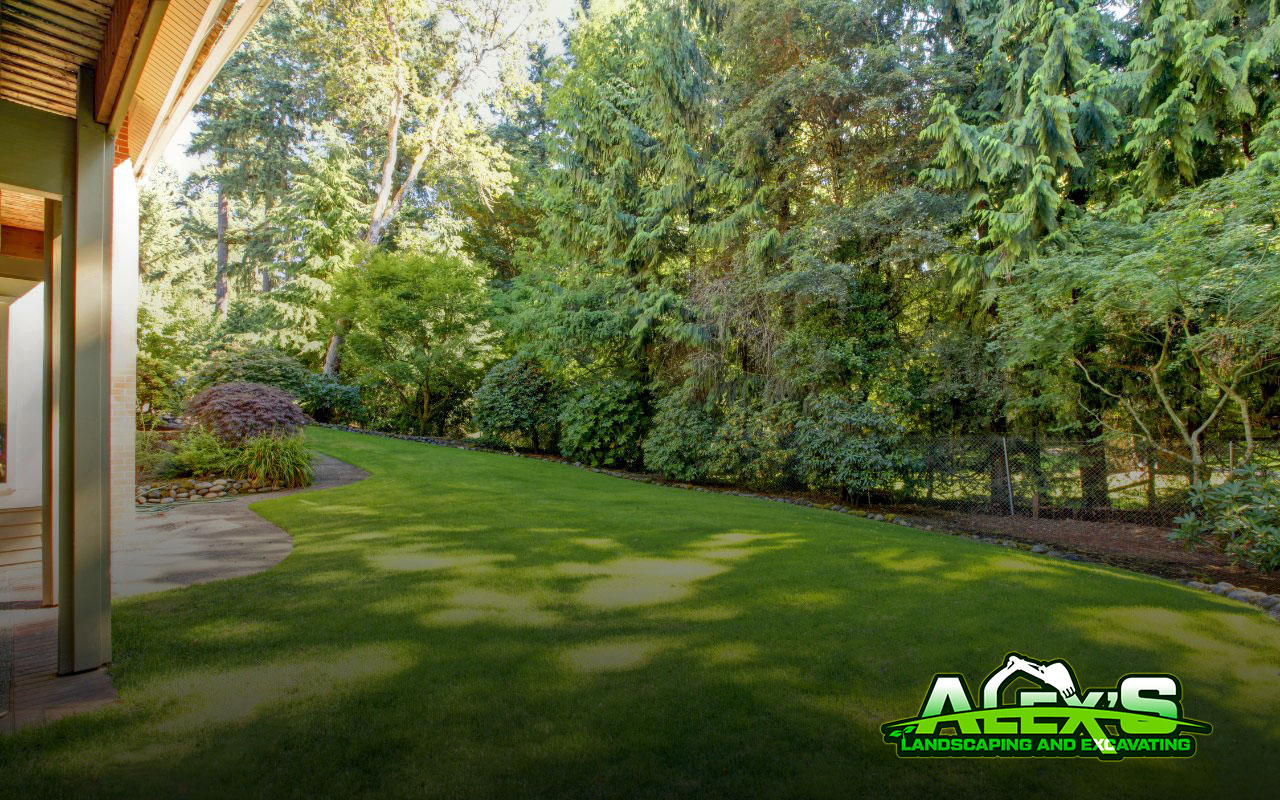
Best Time to Water Lawn in Summer: How to Maintain a Healthy Lawn in Summer?
A lush green lawn is the pride of any homeowner. However, maintaining a healthy lawn, especially during the scorching summer months, can be a challenging task. One of the key factors in keeping your lawn vibrant and thriving is watering it properly. In this article, we will discuss the best time to water your lawn in summer and provide essential tips for maintaining a healthy lawn during the hot season.
Table of Contents
The Importance of Watering Your Lawn – Best Time to Water Lawn in Summer
Why is watering essential for your lawn’s health?
How does proper watering affect the growth of your lawn?
What are the consequences of improper watering?
Understanding the Watering Needs of Your Lawn – Best Time to Water Lawn in Summer
Factors to consider when determining watering requirements
How to identify signs of dehydration in your lawn?
Tools and techniques for measuring soil moisture levels
The Best Time to Water Your Lawn in Summer
Morning: The optimal time for watering
Afternoon: The risks of watering during peak heat
Evening: Is it advisable to water your lawn at night?
How Much Water Does Your Lawn Need? Best Time to Water Lawn in Summer
Determining the right amount of water
The impact of weather conditions on watering frequency
Calculating the precipitation rate for your sprinklers
Watering Techniques for a Healthy Lawn – Best Time to Water Lawn in Summer
Deep watering vs. light watering
The benefits of infrequent but deep watering
Techniques to promote deeper root growth
Avoiding Common Watering Mistakes – Best Time to Water Lawn in Summer
Overwatering: The risks and consequences
Underwatering: Identifying signs of inadequate hydration
Proper irrigation system maintenance
Lawn Maintenance Tips for Summer – Best Time to Water Lawn in Summer
Mowing techniques for a healthy lawn
Fertilization and soil aeration
Frequently Asked Questions (FAQs) – Best Time to Water Lawn in Summer
Achieve a Lush and Vibrant Lawn – Best Time to Water Lawn in Summer
The Importance of Watering Your Lawn – Best Time to Water Lawn in Summer
Why is watering essential for your lawn’s health?
Watering plays a crucial role in maintaining the health and vitality of your lawn. Just like any living organism, grass needs water to survive and thrive. Water is essential for various biological processes within the grass, including photosynthesis, nutrient absorption, and cell growth. Without adequate water, your lawn can quickly become stressed, leading to a weakened root system, discoloration, and an overall decline in its health.
How does proper watering affect the growth of your lawn?
Proper watering provides your lawn with the necessary hydration to support healthy growth. When watered correctly, grass roots grow deeper into the soil, resulting in a more robust and resilient lawn. Deep root systems enable the grass to access nutrients and water more efficiently, making it more tolerant to drought conditions. Additionally, proper watering promotes the development of a dense turf, which helps prevent weed growth and reduces soil erosion.
What are the consequences of improper watering?
Improper watering practices can have detrimental effects on your lawn’s health. Overwatering can lead to shallow root growth, which makes the grass more susceptible to disease, pests, and environmental stress. On the other hand, underwatering can cause the grass to become weak, thin, and prone to weed infestations. Striking the right balance and watering at the correct time is crucial for maintaining a healthy and vibrant lawn.
Understanding the Watering Needs of Your Lawn – Best Time to Water Lawn in Summer
Factors to consider when determining watering requirements
Several factors influence the watering needs of your lawn. These include the grass species, soil type, prevailing weather conditions, and the overall health of your lawn. Warm-season grasses, such as Bermuda grass or St. Augustine grass, have different watering requirements compared to cool-season grasses like Kentucky bluegrass or fescue. It’s essential to identify the type of grass you have to tailor your watering schedule accordingly.
How to identify signs of dehydration in your lawn?
Knowing the signs of dehydration in your lawn can help you adjust your watering routine accordingly. Look for the following indicators:
- Discoloration: Grass that lacks adequate moisture may turn a dull bluish-gray or brownish color.
- Footprints or Lawn Traffic: When stepped on, dehydrated grass does not spring back up but remains flattened.
- Thatch Buildup: A dry lawn is prone to thatch accumulation, which can prevent water from penetrating the soil.
- Wilting or Curling: Dehydrated grass blades tend to curl or fold in an attempt to conserve moisture.
- Increased Weed Growth: Underwatered lawns often create favorable conditions for weed invasion.
Tools and techniques for measuring soil moisture levels
To determine when to water your lawn, you need to assess the moisture content of the soil. Several tools and techniques can help you measure soil moisture levels accurately:
- Moisture Meter: A moisture meter provides a quick and easy way to gauge the moisture content of your soil. Insert the probe into the ground and check the reading on the meter.
- Screwdriver Test: Simply insert a screwdriver into the soil. If it goes in smoothly, the soil is moist. If it requires force or does not penetrate easily, the soil is dry.
- Visual Inspection: Observing the grass and soil can also give you clues about moisture levels. Dry, cracked soil and wilting grass are signs of dehydration.
The Best Time to Water Your Lawn in Summer
Morning: The optimal time for watering
Watering your lawn in the early morning is generally considered the best time. The cooler temperatures and lower wind speeds during the morning hours allow for optimal water absorption into the soil. Watering early also allows the grass blades to dry before the heat of the day, reducing the risk of fungal diseases. Aim to water your lawn between 6 am and 10 am for the best results.
Afternoon: The risks of watering during peak heat
Watering your lawn during the afternoon, especially during the peak heat of the day, is generally not advisable. The high temperatures and intense sunlight cause rapid evaporation, reducing the effectiveness of watering. Additionally, wet grass blades during hot afternoons can act as magnifying glasses, intensifying the sun’s heat and potentially scorching the grass. If watering is necessary in the afternoon, do it sparingly and avoid soaking the grass.
Evening: Is it advisable to water your lawn at night?
Watering your lawn at night is generally discouraged. Although the temperatures are cooler, watering in the evening can create a favorable environment for fungal diseases. Moist grass blades that remain wet overnight can become a breeding ground for fungi, leading to diseases such as brown patches or dollar spots. If watering in the evening is your only option, make sure to water early enough, allowing the grass to dry before nightfall.
How Much Water Does Your Lawn Need? Best Time to Water Lawn in Summer
Determining the right amount of water
The amount of water your lawn requires depends on various factors, including grass species, soil type, and weather conditions. As a general rule, aim to provide your lawn with around 1 inch of water per week. However, this can vary based on your specific location and the type of grass you have. To measure the amount of water your sprinkler system delivers, place a few empty cans in the watering zone and measure the depth of water collected after a watering session.
The impact of weather conditions on watering frequency
During hot summer months, your lawn may require more frequent watering due to increased evaporation and higher water demands. If there are extended periods of high temperatures or drought, you may need to adjust your watering schedule accordingly. Monitor the weather forecast and observe your lawn’s condition to make informed decisions about the frequency and duration of watering.
Calculating the precipitation rate for your sprinklers
Understanding the precipitation rate of your sprinklers can help you determine the appropriate watering time. Precipitation rate refers to the amount of water delivered by your sprinklers in a given time frame. To calculate the precipitation rate, follow these steps:
- Place several empty cans (of equal size) around your lawn.
- Run your sprinklers for a specific amount of time, e.g., 15 minutes.
- Measure the depth of water collected in each can.
- Calculate the average depth of water collected across all cans.
- Divide the average depth by the watering time (in minutes) to determine the precipitation rate.
Watering Techniques for a Healthy Lawn – Best Time to Water Lawn in Summer
Deep watering vs. light watering
Deep watering is generally more beneficial for your lawn than light watering. Moreover, deep watering encourages deep root growth, allowing the grass to access water and nutrients from lower soil layers. On the other hand, light watering only moistens the surface, which can lead to shallow root development and a weaker lawn. Aim for deep watering sessions that penetrate at least 6 inches into the soil.
The benefits of infrequent but deep watering
Infrequent but deep watering promotes stronger and more resilient lawns. Watering deeply less frequently encourages the grass roots to seek moisture deeper in the soil, making them more drought-tolerant. It also helps create a more drought-resistant lawn by stimulating deeper root growth and reducing water loss through evaporation. Avoid shallow and frequent watering, as it can result in weak, shallow-rooted grass.
Techniques to promote deeper root growth
To encourage deep root growth and promote a healthier lawn, employ the following watering techniques:
- Slow Soaking: Water your lawn slowly to allow the water to penetrate the soil deeply. Watering too quickly can lead to runoff and wasted water.
- Cycle and Soak Method: If your soil has poor absorption capabilities, water in cycles. Apply water in shorter intervals, allowing time between cycles for the water to soak into the soil.
- Aerate Your Lawn: Aerating your lawn by removing small plugs of soil can improve water penetration. This process helps break up compacted soil and allows water to reach the grassroots.
Avoiding Common Watering Mistakes – Best Time to Water Lawn in Summer
Overwatering: The risks and consequences
Overwatering is a common mistake that can harm your lawn. Excessive watering can lead to shallow root growth, nutrient leaching, and increased vulnerability to diseases and pests. Signs of overwatering include yellowing grass, fungus growth, and a spongy feel when walking on the lawn. To avoid overwatering, monitor soil moisture levels and adjust your watering schedule accordingly.
Underwatering: Identifying signs of inadequate hydration
Underwatering your lawn can cause it to become stressed, resulting in thinning grass, brown patches, and increased weed growth. Signs of underwatering include dry, brittle grass blades, slow recovery from foot traffic, and soil that pulls away from the edges of the lawn. If you notice these signs, increase the frequency and duration of your watering sessions.
Proper irrigation system maintenance
Regular maintenance of your irrigation system is essential to ensure efficient and effective watering. Here are some maintenance tips:
- Inspect Sprinkler Heads: Regularly check your sprinkler heads for proper alignment, clogs, or damage. Adjust or replace as necessary.
- Fix Leaks: Address any leaks in your irrigation system promptly to avoid water wastage.
- Check Coverage: Ensure that your sprinklers are providing uniform coverage across your lawn. Adjust or add sprinklers if necessary.
- Seasonal Adjustments: Adjust your watering schedule and duration based on the changing seasons and weather conditions.
Lawn Maintenance Tips for Summer – Best Time to Water Lawn in Summer
Mowing techniques for a healthy lawn
Proper mowing practices contribute to the overall health of your lawn. Follow these tips for a well-maintained lawn:
- Set the Right Height: Adjust your mower to the appropriate cutting height for your grass species. Cutting too short can stress the grass and make it more susceptible to weeds and diseases.
- Regular Maintenance: Keep your mower blades sharp to ensure clean cuts and prevent damage to the grass. Dull blades can tear the grass, leading to browning and weakening.
Dealing with pests and weeds
Summer can bring an influx of pests and weeds to your lawn. Here’s how you can manage them effectively:
- Weed Control: Regularly inspect your lawn for weeds and remove them manually or with appropriate herbicides. Applying pre-emergent herbicides in early spring can help prevent weed growth.
- Pest Management: Identify common pests in your area and take proactive measures to control them. This may include using organic pest control methods or seeking professional assistance if necessary.
Fertilization and soil aeration
Proper fertilization and soil aeration are essential for maintaining a healthy lawn:
- Fertilization: Apply a balanced, slow-release fertilizer according to your grass type and the manufacturer’s instructions. This will provide essential nutrients for optimal growth.
- Soil Aeration: Aerating your lawn helps alleviate soil compaction, allowing air, water, and nutrients to reach the grassroots more effectively. Use a core aerator or hire a professional service for this task.
Frequently Asked Questions (FAQs) – Best Time to Water Lawn in Summer
- How often should I water my lawn during summer? During summer, water your lawn 2-3 times per week, providing approximately 1 inch of water per session.
- Is it better to water my lawn manually or use an irrigation system? Using an irrigation system with a timer is more convenient and ensures consistent watering. However, manual watering can be suitable for smaller lawns.
- Can I water my lawn during a heatwave? Yes, watering during a heatwave is crucial. Increase the frequency of watering sessions to provide adequate hydration during extreme temperatures.
- Is it necessary to water my lawn if it has gone dormant? Dormant lawns are designed to withstand periods of limited water availability. However, if prolonged drought conditions persist, occasional deep watering can help maintain lawn health.
- What are the signs of overwatering my lawn? Signs of overwatering include yellowing grass, standing water, a spongy feel underfoot, and the presence of fungus or mold.
- How can I prevent water runoff on sloped lawns? To prevent water runoff on sloped lawns, water in shorter cycles with breaks in between to allow the water to soak into the soil fully.
Achieve a Lush and Vibrant Lawn – Best Time to Water Lawn in Summer

Maintaining a healthy lawn in summer requires proper watering techniques and attention to lawn care practices. Understanding the watering needs of your lawn, determining the best time to water, and avoiding common watering mistakes are crucial steps toward achieving a lush and vibrant lawn. By following the tips and guidelines outlined in this article, you can ensure that your lawn remains healthy, resilient, and visually appealing throughout the summer season.
Remember, finding the right balance in watering, along with regular maintenance and care, will help you achieve a beautiful lawn that enhances the overall aesthetics and enjoyment of your outdoor space.
